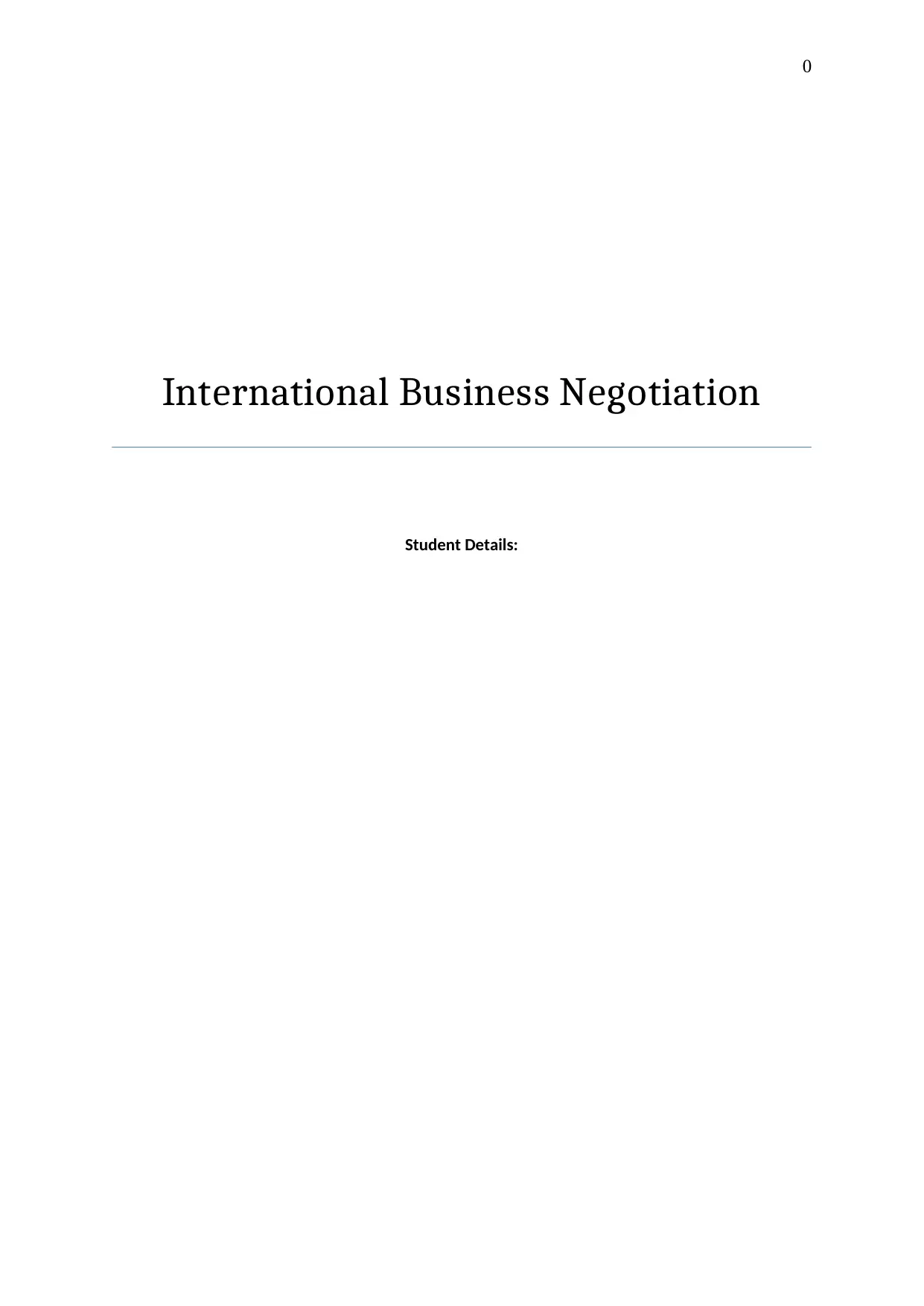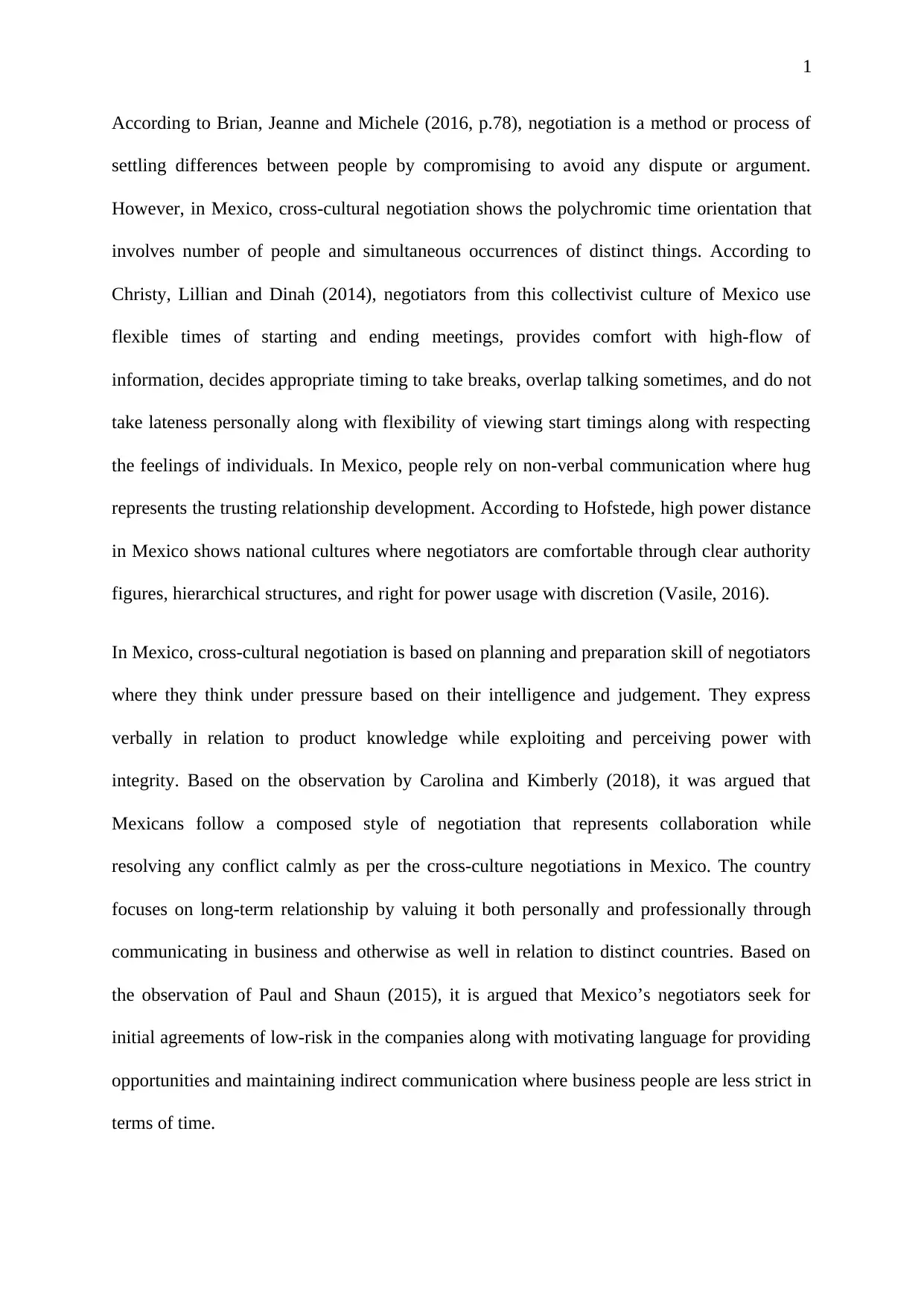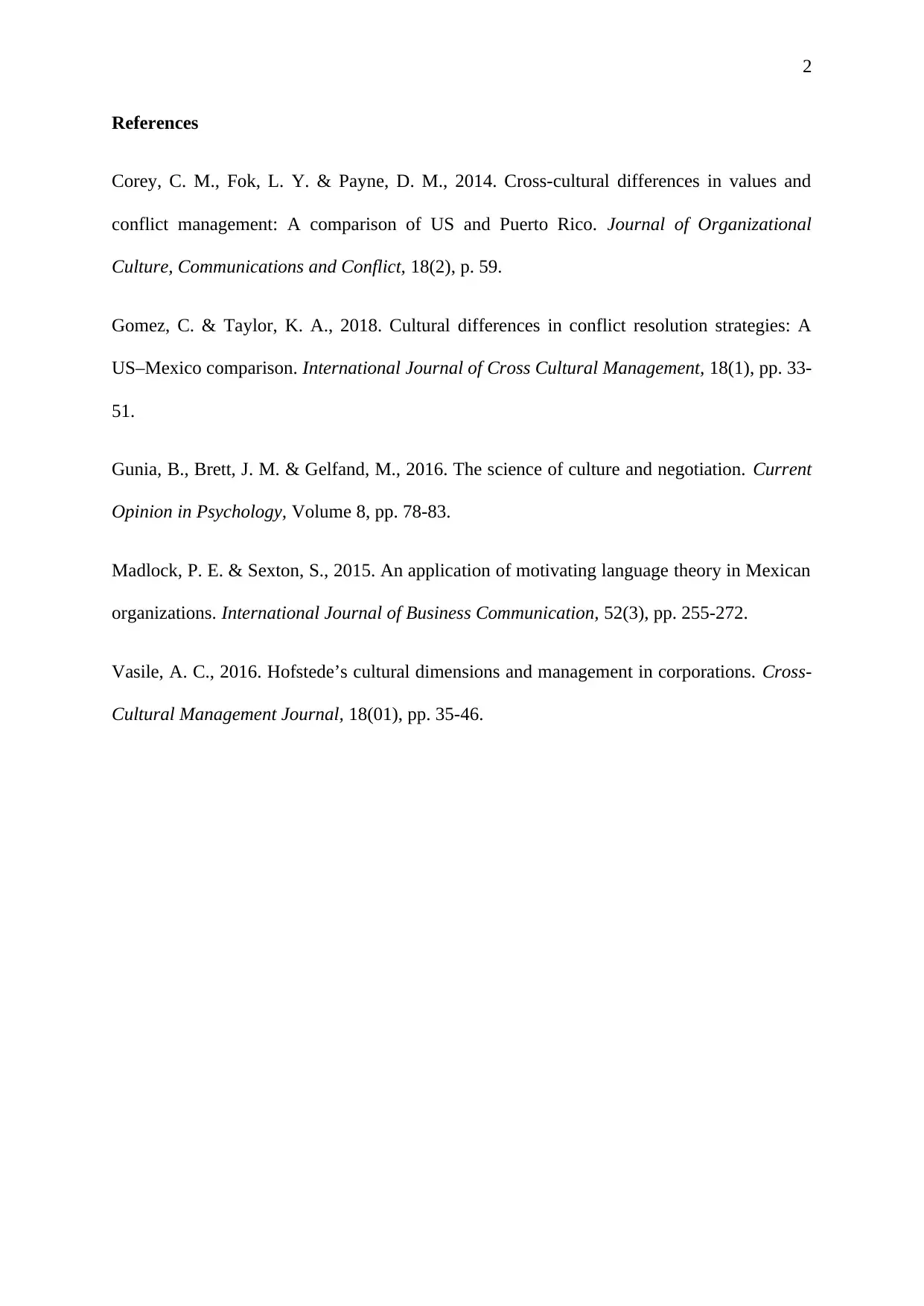International Business Negotiation: Analyzing US Negotiation Style
VerifiedAdded on 2022/07/28
|3
|533
|24
Report
AI Summary
This report provides an analysis of the negotiation style of the United States in international business contexts. The report examines the characteristics of American negotiators, including their result-oriented and assertive approach, as well as their preference for win-win outcomes and individualism. It explores how cultural factors influence their negotiation strategies, such as time frames and body language. The report also discusses the importance of understanding these nuances for foreign negotiators to avoid misunderstandings and achieve successful outcomes. It references various scholarly sources to support its findings, offering a comprehensive overview of the subject. The report highlights the significance of planning, preparation, and the use of specific tactics in navigating the complexities of international business negotiations involving the United States. It emphasizes the need for foreign negotiators to be aware of American communication styles and adapt their strategies accordingly to build strong relationships and achieve favorable agreements.
1 out of 3




![[object Object]](/_next/static/media/star-bottom.7253800d.svg)